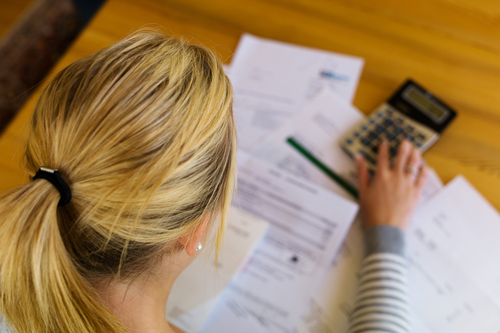
Snowballing 101
The debt snowball method pays off your smallest debts first and, once those are paid off, you move on to the larger debts. Start off by listing your debts in order from smallest to largest. You will attack the smallest debt first. While finishing off the smallest debt, you will be paying the minimum payment on the larger debts.
Here’s a quick example:
- $1,000 medical bill (minimum payment $50)
- $5,000 credit card ($75)
- $10,000 car loan ($200)
If you have an extra $1,275 a month, you can pay off your medical bill in the first month while paying the minimum on your credit card and car loan. After that you can move toward crushing the credit card debt and then move on to that pesky car loan.
Benefits of Snowballing Out of Debt
Some of the benefits of using the snowball method are purely psychological. Using this method enables you to see results sooner. Once you finish paying off your first debt, you no longer have to worry about paying that creditor. That gives you a sense of accomplishment; no more emails or calls from debt collectors.
A study by the Kellogg School of Business at Northwestern found that the snowball approach works. By relishing the small victories, debtors were more likely to continue to pay off their debts. The study used data from 6,000 people trying to eliminate credit debt and found this led to faster debt elimination.
Cons of the Debt Snowball Method
The debt snowball method does come with some controversy. Although you are paying off the debt with the highest balance, the debt snowball method fails to take interest into account. If your largest debt also happens to be the one you pay the highest interest on, you will end up paying a lot more in interest. Your interest payments may end up doubling after everything is said and done, so do your due diligence to see if this method will work for you.
Preparing to Pay Off Your Loans
Whether or not you choose to use the debt snowball method, you are going to have to prepare to pay off these loans. You may have to cut down on those iced soy lattes or find unique ways to generate cash flow.
There are several ways you can save some money to start paying off your debt now. If you receive periodic payments from a structured settlement or annuity, you could sell its future payments to a company like J.G Wentworth and use your lump sum to start paying off your debts.

Joe is a former financial advisor and media representative for American Express and Ameriprise. He was the “Money Man” at Detroit television WXYZ-TV, appearing twice weekly. He’s also appeared in Bride, Best Life, and Child magazines, the Los Angeles Times, Chicago Sun-Times, Detroit News and Baltimore Sun newspapers and numerous other media outlets. Joe holds B.A Degrees from The Citadel and Michigan State University.
Paying off the smallest debt can be wise decision to clean up a credit rating and lessen creditors and thus anxiety. Once the small ones are cared for such as past dues on utilities, cell phone, medical etc. I then recommend that the focus shift to paying off the highest interest rate. Putting extra money on high interest rate loans is better than putting the money in savings. If the credit card is charging 15% but your savings account is paying 1%, you will make 14% on your money by paying off the credit card rather than saving.